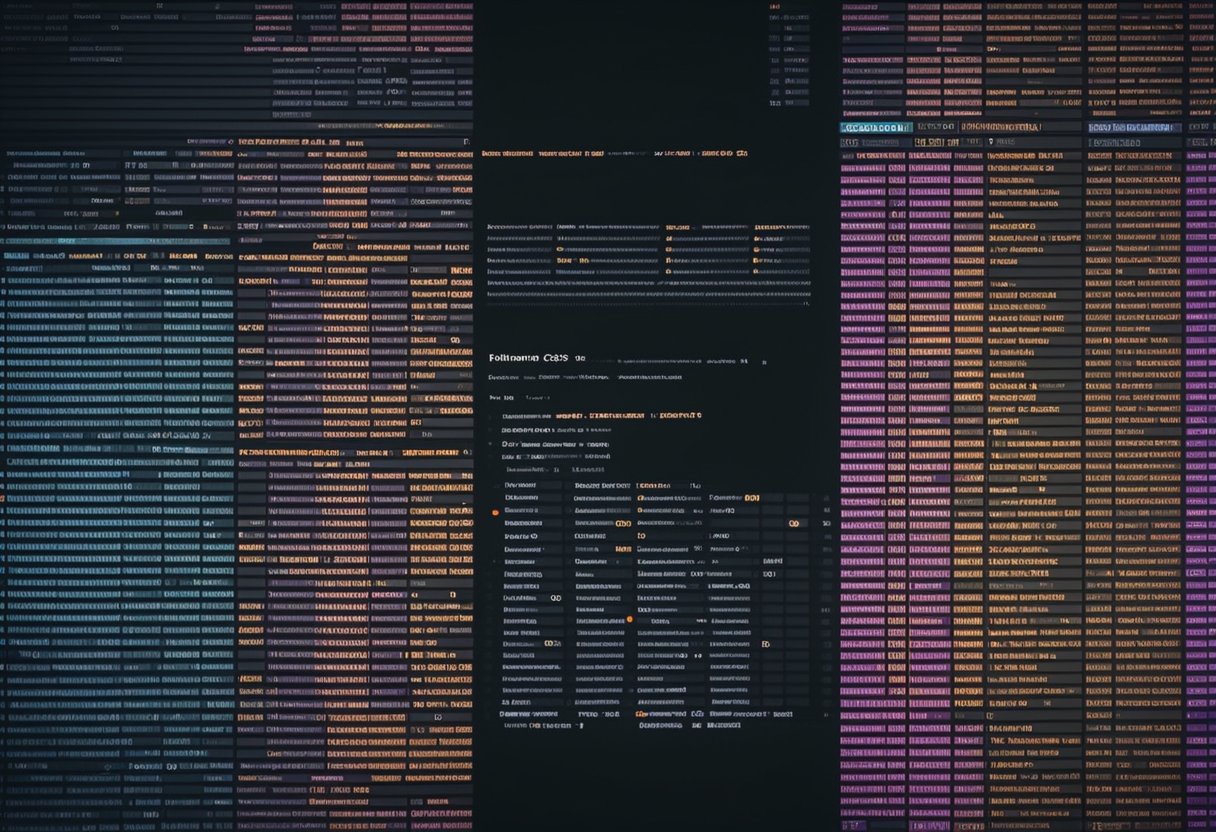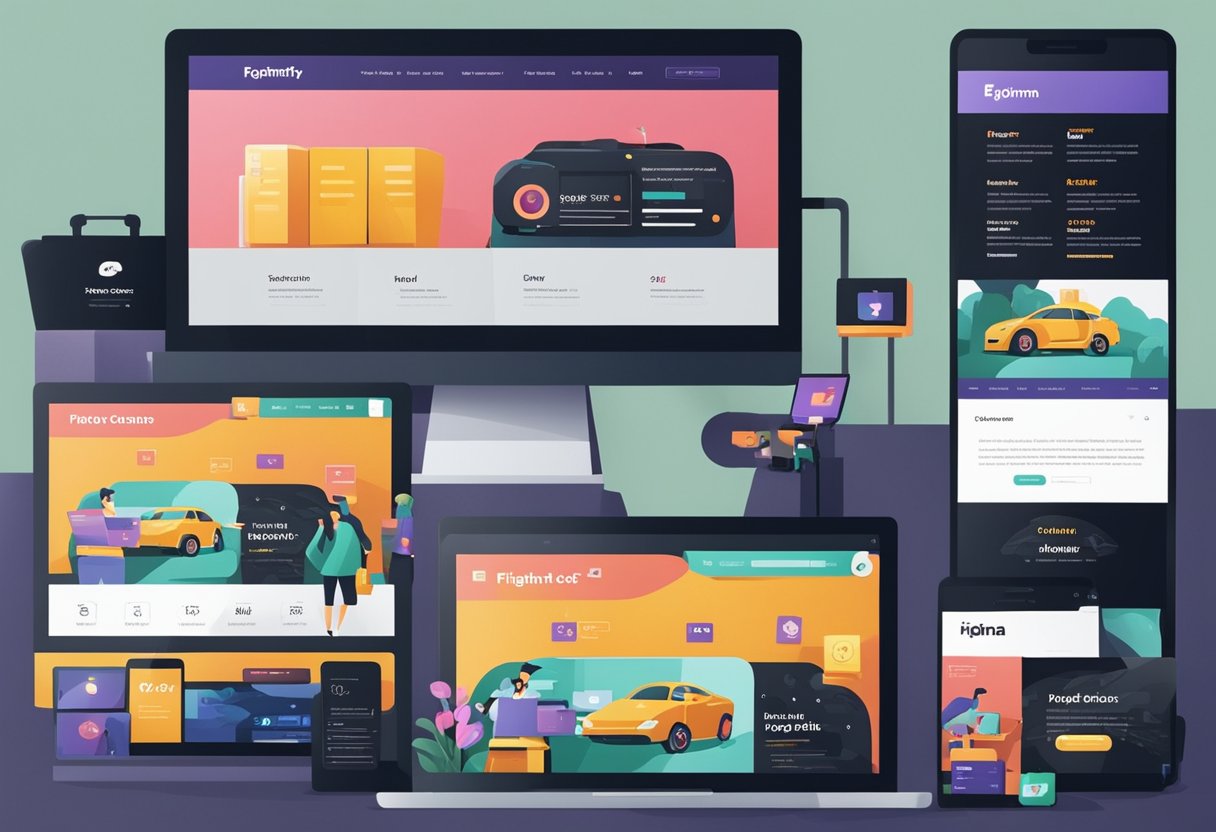Understanding Figma and Its Role in Website Conversion

Convert Figma to Website- Figma is a popular design tool that allows designers to create high-fidelity prototypes, icons, components, and other design elements for websites and apps. With Figma, designers can create optimized designs for different devices and screen sizes, making it easier to create responsive websites that look great on all devices.
One of the key benefits of Figma is that it allows designers to create high-fidelity prototypes that look and feel like real websites. These prototypes can be used to test and refine designs before implementing them on a live website. Figma also allows designers to create interactive prototypes that can be used to demonstrate how the website will work, including how users will interact with different elements on the page.
When it comes to converting Figma designs into live websites, designers typically start by exporting the design assets from Figma. This can include images, colors, and other design elements used in the design. Once the assets are exported, they can be used to create the website using HTML, CSS, and other web development technologies.
One important thing to remember when converting Figma designs into websites is that the design must be optimized for different devices and screen sizes. This means that designers must ensure that the website looks and works great on desktops, laptops, tablets, and smartphones. They must also ensure the website is optimized for browsers and operating systems.
To help streamline the process of converting Figma designs into websites, designers can use services like Figmafy.
Steps to Convert Figma Design to HTML and CSS

Converting a Figma design to a live website using HTML and CSS can be a complex process, but by following a few key steps, it can be done efficiently and effectively. Here are the steps to convert your Figma design to HTML and CSS:
1. Export Assets
Before starting the conversion process, it is essential to export the necessary assets from Figma. This includes all images, icons, and other design elements used on the website. To export assets, select the desired layers or frames and choose the export option. Figma provides a convenient way to export assets, making it easy to start the conversion process.
2. Convert Figma Design to HTML Code
The next step is to convert the Figma design to HTML code. This involves using HTML tags to create the structure of the website and CSS styles to define the layout, typography, and color of the website. It is essential to use proper HTML tags and CSS selectors to ensure that the website is accessible and easy to maintain.
3. Add JavaScript and Media Queries
Once the basic structure and layout of the website have been defined using HTML and CSS, it is time to add JavaScript and media queries. JavaScript can add interactivity and functionality to the website, while media queries can make the website responsive and adaptable to different screen sizes.
4. Test and Debug
After the website has been converted from Figma to HTML and CSS, it is important to test and debug the website to ensure that it functions correctly and is error-free. This involves using tools such as the browser developer console and online validators to identify and fix any issues that may arise during the conversion process.
By following these steps, it is possible to convert a Figma design to a live website using HTML and CSS.
Using Plugins and Tools for Conversion

Converting Figma designs into live HTML websites can be a tricky process, but thankfully, there are several plugins and tools available to make it easier. Using these plugins and tools, designers and developers can quickly and easily convert their Figma designs into fully functional websites.
One popular plugin for converting Figma designs into code is Anima. This plugin allows users to create responsive websites directly from their Figma designs. With Anima, designers can add animations, interactions, and responsive layouts to their designs, making it easy to create dynamic and engaging websites.
For developers who prefer to work with code directly, there are several text editors and code editors available that can make the conversion process easier. Some popular options include Visual Studio Code, Atom, and Sublime Text. These editors provide powerful tools for working with HTML, CSS, and JavaScript, making it easy to create and edit code directly.
Finally, for businesses or advanced prototyping, the Figma-to-Code plugin by Plasmic can convert Figma designs into React code in just a few minutes. This plugin allows users to copy and paste layers from their Figma designs directly into their code, making it easy to create dynamic and responsive websites.
Overall, there are many plugins and tools available for converting Figma designs into live HTML websites. By using these tools, designers and developers can save time and create beautiful, responsive websites that are sure to impress.
Testing and Optimizing the Converted Website

Once the website has been converted from Figma to HTML, it is important to test and optimize it to ensure that it is functional and user-friendly. There are several aspects to consider when testing and optimizing a website, including images, fonts, links, pages, semantic HTML, screen sizes, web browsers, responsiveness, mobile, spacing, and more.
One important aspect to consider when testing and optimizing a website is semantic HTML. Semantic HTML helps search engines understand the website's content, which can improve its ranking in search results. It also makes the website more accessible to disabled users, as screen readers can better understand the content.
Another important aspect to consider is the website's responsiveness. With an increasing number of users accessing websites on mobile devices, it is important to ensure that the website is optimized for different screen sizes and devices. This can be achieved through the use of responsive design, which adjusts the layout of the website based on the size of the screen.
Web designers should also test the website on different web browsers to ensure that it is functional and looks consistent across all platforms. They can use the inspect feature in Google Chrome to identify any issues with the website's styling and make necessary adjustments using CSS.
It is also important to optimize the website's loading speed by minimizing the file size of the images and optimizing the code. Web designers can use tools such as PageSpeed Insights to identify areas for improvement.
In addition to testing and optimizing the website, it is important to ensure that it is hosted on a functional web server and that all links are working properly. Web designers should also test the website's functionality by creating an account and testing all features.
Overall, testing and optimizing a converted website is crucial to ensure it is functional, user-friendly, and optimized for search engines. By following best practices and utilizing tools and resources, web designers can create a high-quality website that meets the needs of its users.
Finalizing and Launching the Website

After exporting the Figma design to HTML, the next step is to finalize and launch the website. This involves several crucial steps that ensure the website is functional, visually appealing, and optimized for performance.
First, the project team should review the HTML files and ensure all the elements are in place and functioning correctly. They should also ensure that the design is consistent with the original Figma mockups and that the website's interface is user-friendly and easy to navigate.
Next, the team should check the website's performance and optimize it for speed and responsiveness. This may involve compressing images, minifying CSS and JavaScript files, and reducing the number of HTTP requests.
Once the website is finalized, the team should package all the necessary files into a zip file and upload it to a hosting platform. They should also create a landing page that showcases the website's features and values and encourages visitors to explore further.
If the website requires frequent updates, the team may consider using a content management system (CMS) like WordPress or Drupal to manage the website's content and functionality.
Finally, the team should add interactive elements like videos, forms, and social media links to make the website more engaging and user-friendly. They may also add JavaScript files to add dynamic functionality to the website.
By following these steps, the team can ensure that the Figma design is converted to a fully functional website that meets the project's requirements and exceeds the user's expectations. Figmafy can help streamline this process by providing a seamless workflow for exporting Figma designs to HTML and ensuring the design is consistent with the original mockups.
Figma to Code Services from Figmafy

Figmafy is a software development service made up of a team of excellent developers who can turn Figma designs into anything. With their expertise in building WordPress, HTML, Webflow pages, websites, and even full-fledged software from Figma designs, Figmafy is a reliable choice for those looking to convert their Figma designs to code.
Figmafy offers a quick and easy way to turn Figma designs into functional code without manual coding. Their services include converting Figma designs to HTML, CSS, React, Vue, WordPress, Shopify, and more.
By using Figmafy's services, designers can focus on creating stunning designs in Figma without having to worry about the technical aspects of turning those designs into code. Figmafy's team of developers will take care of everything, ensuring that the resulting code is highly responsive, pixel-perfect, and bug-free.
Whether you're a designer looking to convert your Figma designs to code or a developer looking for a reliable partner to help you streamline your design workflows, Figmafy is an excellent choice.


